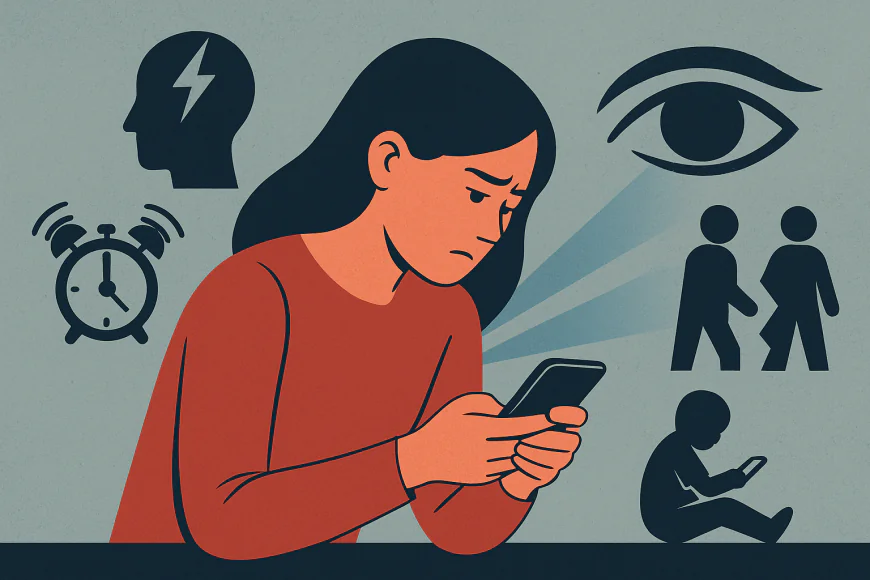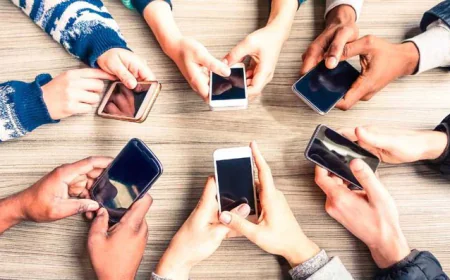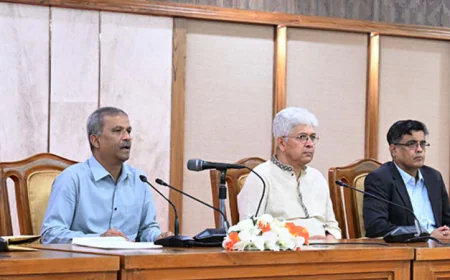Excessive Smartphone Use Linked to Anxiety, Sleep Loss, and Social Isolation

Once a mere communication tool, the mobile phone has now transformed into an all-in-one device—bringing the world to our fingertips. From messaging and media to work and entertainment, the smartphone is a daily necessity. But while it offers convenience, experts warn that excessive smartphone use is silently eroding both physical and mental well-being.
Doctors and psychologists in Bangladesh are raising concerns about the increasing health risks associated with smartphone addiction, particularly among youth and working professionals.
Smartphone Addiction: A Silent Epidemic?
Recent studies show that nearly 65% of smartphone users aged between 18 and 35 spend more than 5 hours a day on their devices. Many even check their phones the moment they wake up and continue using them until they fall asleep.
Professor Dr. Mahbuba Rahman from the Department of Psychology at the University of Dhaka explains:
“Smartphone usage triggers dopamine release in the brain, giving users a sense of pleasure. This leads to repeated use, forming a cycle of dependency. Over time, it can cause mental fatigue, attention deficiency, and even depression.”
Blue Light: An Enemy to Sleep
Medical experts highlight that blue light emitted from smartphone screens disrupts melatonin production in the brain, a hormone crucial for regulating sleep.
Dr. Riazul Islam, a medicine specialist at Dhaka Medical College Hospital, states:
“Night-time phone use is disturbing people's natural sleep cycles. This not only reduces sleep quality but also weakens the immune system, increasing risks of high blood pressure, headaches, and fatigue.”
Eye Strain and Physical Discomfort
Staring at screens for prolonged periods causes eye strain, blurred vision, dry eyes, and frequent headaches—a condition now known as “digital eye strain.” Additionally, poor posture during phone use contributes to neck pain, backaches, and joint stress.
A Greater Threat to Children and Teenagers
In many households, smartphones are often used to pacify children. While it may work momentarily, the long-term impact is alarming.
Dr. Labiba Nowrin, a pediatric specialist at the National Institute of Child Health, warns:
“Children under two should avoid screens altogether. Excessive screen time hinders language development, attention span, behavioral control, and sleep quality. Lack of physical activity also increases the risk of obesity and early-stage diabetes.”
Decline in Social Bonds
As smartphone dependency increases, direct communication within families and friendships is diminishing. Psychologists say relationships are being weakened as people become more absorbed in virtual interactions rather than real ones.
What Can Be Done?
Health experts recommend a set of guidelines to reduce risks:
- Limit daily screen time
- Avoid smartphone use at least one hour before bed
- Spend quality time with family without devices
- Avoid giving children unrestricted access to smartphones
- Introduce “digital detox” periods regularly
Technology should serve humanity—not dominate it. Responsible and limited smartphone use can ensure we enjoy the benefits of technology without falling victim to its side effects. Creating awareness at home, in schools, and across society is essential to curb this growing concern.
Related Facts:
-
A 2025 national survey revealed that 74% of Bangladeshi youth check social media before going to sleep.
-
The World Health Organization (WHO) recommends that children under the age of 5 should have no more than 1 hour of screen time per day.
















































